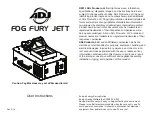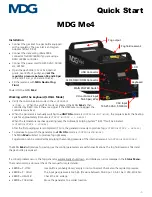
(4) Modem (R144EFXL) block
INTRODUCTION
The Rockwell R144EFXL MONOFAX modem is a synchronous
14400 bits per second (bps) half-duplex modem with error detection
and DTMF reception. It has low power consumption and requires only
a 5V DC power supply. The modem is housed in a single
VLSI device package.
The modem can operate over the public switched telephone network
(PSTN) through line terminations provided by a data access arrange-
ment (DAA).
The modem satisfies the requirements specified in CCITT recommen-
dations V.33, V.17, V.29, V.27 ter, V.21 Channel 2 (FSK), T.4, and
T.3, and meets the binary signaling requirements of T.30.
The modem can operate at 9600, 7200, 4800, 2400, or 300 bps. The
modem supports the V.17 signalling rates of 14400, 12000, 9600,
and 7200 bps using trellis-coded modulation (TCM). In addition, the
modem supports V.27 ter and V.17 short trains.
The modem can also perform HDLC framing according to T.30 at
14400, 12000, 9600, 7200, 4800, 2400, or 300 bps.
An FSK flag pattern (7E) detector facilitates FSK detection in the high
speed receiver.
The voice mode allows the host computer (DTE) to transmit and
receive audio signals and messages.
The modem includes a programmable DTMF receiver and three pro-
grammable tone detectors which operate concurrently with the V.21
channel 2 (FSK) receiver. The three programmable tone detectors
also operate concurrently with the voice mode receiver.
General purpose input/output (GPIO) and general purpose input
(GPI) pins are available for host assignment in the 100-pin PQFP.
The modem’s small size, single voltage supply, and low power con-
sumption allow the design of compact system enclosures for use in
both office and home environments.
The modem is available in either a 100-pin plastic quad flat pack
(PQFP) or a 64-pin quad in-line package (QUIP). The package are
shown in Figure 1. The general modem interface is illustrated in
Figure 2.
Additional modem information is described in the R144EFXL
MONOFAX Modem Designer’s Guide (Order No. 895).
FEATURES
•
Group 3 facsimile transmission/reception
–
CCITT V.33, V.17, V.29, V.27 ter, V.21 Channel 2 (FSK), T.4,
and T.30
–
HDLC Framing at all speeds
•
Group 2 facsimile transmission/reception
–
CCITT T.3
–
External clock tracking
•
V.27 ter short train
•
V.29 short train
•
Concurrent DTMF, FSK, and tone reception
–
Concurrent DTMF reception, FSK flag pattern (7E) detection,
and tone detection
•
FSK flag pattern detect during high speed reception
•
Voice mode transmission/reception
•
2-wire half-duplex
•
Programmable transmit level: 0 to -15 dBm
•
Programmable transmit analog attenuation:
0 dBm to 14 dB in 2 dB steps
•
Receive dynamic range: 0 to –43 dBm
•
Programmable dual tone generation
•
Programmable tone detection
•
Programmable turn-on and turn-off thresholds
•
Programmable interface memory interrupt
•
Diagnostic capability
–
Allows telephone line quality monitoring
•
Compromise equalization
–
Automatic adaptive and fixed digital
•
DTE interface: two alternate ports
–
Selectable microprocessor bus (6500 or 8085)
–
CCITT V.24 (EIA-232-D compatible) interface
•
TTL and CMOS compatible
•
Low power consumption:
–
Operating mode: 270 mW (typical)
–
Sleep mode: 17 mW (typical)
•
5VDC power supply
•
Single Package
–
100-pin PQFP or 64-pin QUIP
•
Hardware compatible with the R96DFXL MONOFAX modem
•
Software compatible with all MONOFAX modems
UX-600MU/MC
FO-1660U/C
5 – 6
Summary of Contents for FO-1660
Page 15: ...M E M O UX 600MU MC FO 1660U C 1 13 ...
Page 72: ...Control PWB parts layout Top side 6 8 UX 600MU MC FO 1660U C ...
Page 73: ...Control PWB parts layout Bottom side 6 9 UX 600MU MC FO 1660U C ...
Page 75: ...TEL LIU PWB parts layout 6 11 UX 600MU MC FO 1660U C ...
Page 77: ...6 13 Power supply PWB parts layout UX 600MU MC FO 1660U C ...
Page 80: ...Operation panel PWB parts layout 6 16 UX 600MU MC FO 1660U C ...
Page 92: ...M E M O UX 600MU MC FO 1660U C 8 8 ...
Page 115: ......
















































